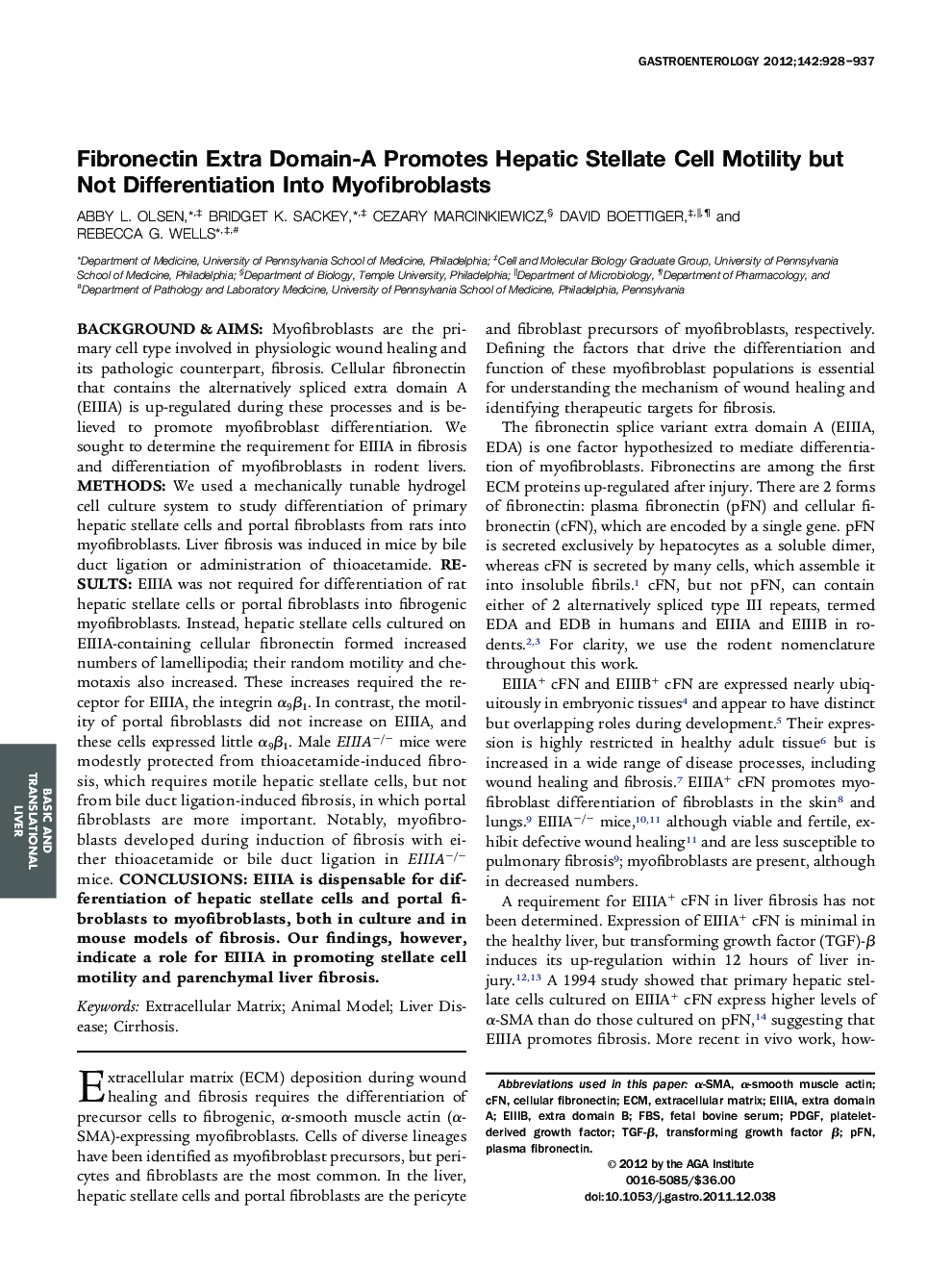| Article ID | Journal | Published Year | Pages | File Type |
|---|---|---|---|---|
| 6096036 | Gastroenterology | 2012 | 13 Pages |
Background & AimsMyofibroblasts are the primary cell type involved in physiologic wound healing and its pathologic counterpart, fibrosis. Cellular fibronectin that contains the alternatively spliced extra domain A (EIIIA) is up-regulated during these processes and is believed to promote myofibroblast differentiation. We sought to determine the requirement for EIIIA in fibrosis and differentiation of myofibroblasts in rodent livers.MethodsWe used a mechanically tunable hydrogel cell culture system to study differentiation of primary hepatic stellate cells and portal fibroblasts from rats into myofibroblasts. Liver fibrosis was induced in mice by bile duct ligation or administration of thioacetamide.ResultsEIIIA was not required for differentiation of rat hepatic stellate cells or portal fibroblasts into fibrogenic myofibroblasts. Instead, hepatic stellate cells cultured on EIIIA-containing cellular fibronectin formed increased numbers of lamellipodia; their random motility and chemotaxis also increased. These increases required the receptor for EIIIA, the integrin α9β1. In contrast, the motility of portal fibroblasts did not increase on EIIIA, and these cells expressed little α9β1. Male EIIIAâ/â mice were modestly protected from thioacetamide-induced fibrosis, which requires motile hepatic stellate cells, but not from bile duct ligation-induced fibrosis, in which portal fibroblasts are more important. Notably, myofibroblasts developed during induction of fibrosis with either thioacetamide or bile duct ligation in EIIIAâ/â mice.ConclusionsEIIIA is dispensable for differentiation of hepatic stellate cells and portal fibroblasts to myofibroblasts, both in culture and in mouse models of fibrosis. Our findings, however, indicate a role for EIIIA in promoting stellate cell motility and parenchymal liver fibrosis.
